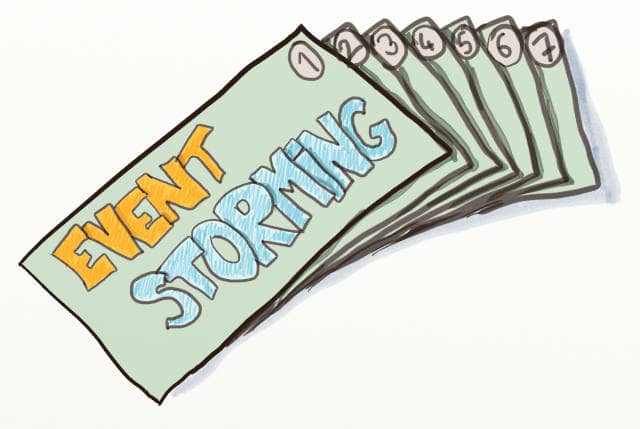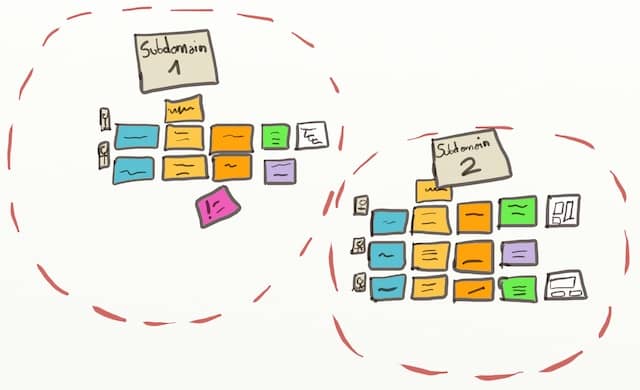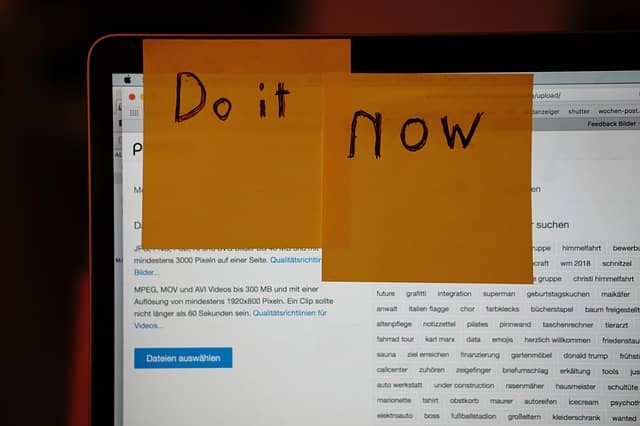7 tactics that will make your DDD Design-Level Event Storming pay-off
What should we do after a DDD Design-Level Event Storming? How do we capture shared knowledge? How do we make the workshop more effective? Find answers here!
ℹ️ NOTE: Part of this post has been republished and updated on the Event Storming Journal blog

This post is the fourth, and last, in a series about how to build event-based systems with Design-Level Event Storming and DDD. If you haven’t yet, start by the beginning.
What can we do after?
Design-Level Event Storming creates enough shared understanding to open up many opportunities.
Tactic 1: Highlight the Core
A first thing you might do, even before you leave the workshop, is to shrink the core. DDD calls this a Highlighted Core. The smaller the core subdomain, the clearer priorities are.
Aggregates already group events together. Aggregates make it easy to draw subdomains.

Tactic 2: Curate views
Depends on the decisions, and on the context. Usually putting decisions on a flip chart and sharing pictures might do the trick.
— Alberto Brandolini (@ziobrando) March 15, 2019
As Alberto said, the real outcome is in the developers’ heads. You might extend their memories a bit by taking a picture of the design and sticking the board in the team’s space. Yet, don’t expect these memories to last for months.
There is a better way. You can also capture focused views. For example: collect domain definitions, problems, and decisions through specific documents. Check my post How to Capture the Outputs of an Event Storming Workshop for all the details.
Tactic 3: Run Example mapping
All the business rules are a significant first step to defining precise user-stories. It’s an opportunity to do Example Mapping workshops and detail these stories further.
Tactic 4: Build it!
💡 The best way to get more feedback after a Design-Level Event Storming is to give try to build the design!
Finally, the best way to get more feedback is to give all this a try! If you are starting, building a walking skeleton creates the most learning. Event Storming is pretty useful at scope-selection.

If you already have a running system, the question might be a bit more complicated. Before people leave the workshop, have a discussion to agree on the next priorities. You might need to mix learning experiments with money-generating features.
Facilitation tricks
I’ve now run the Design-Level Event Storming quite a few times, and I’ve collected some best practices.
Many general Event Storming best practices also work here. Read 4 tips that will make your DDD Big Picture Event Storming successful for a few. (NOTE: Since then, I’ve written 21 More Event Storming Tips)
In any case, Design-Level Event Storming also has its specificities.
Tactic 5: Don’t talk about DDD
First, it goes deeper into the DDD folklore. That might be too big a step for people who don’t know DDD. I’d first go through the Big Picture Event Storming. It lets people discover DDD and appreciate all the benefits it has to offer. To say it another way
- Use Big Picture Event Storming to sell DDD
- Only later dive deeper with Design-Level Event Storming
Tactic 6: Make the Design Space Really Infinite
💡 You’ll need even more infinite design space for Design-Level Event Storming 😉
Second, post-its are great because we can move them around many times. As you might have noticed on the agenda, we are going to insert new post-its between existing ones very often. Every time we do this, we’ll need a bit more design place. That’s when ‘Infinite Design Space’ takes all its meaning. As the facilitator, you need to be proactive:
- Add more design space
- Move the post-its to keep the chronology or design clear
Shared understanding relies on common metaphors. If post-its get aligned vertically instead of horizontally, add space NOW!

Tactic 7: Optimize the time of Domain and UX experts
Many steps are pretty straightforward, almost mechanic. There are the pre-requisites to the critical steps: business rules and UX exploration.
These mechanic steps don’t need the experts. Also, we don’t want to waste their precious time! The simplest thing to do is to go fast on these steps. Explain what to do and ask everyone to take part.
Finally, exploring the UX of all screens and Business Rules takes some time. If all the group is waiting for 2 specific people to discuss all the topics, the workshop will take ages! Event Storming makes it easy to work in parallel! UX experts can work on UX, while domain experts discuss business rules. With enough experts, you might even have many groups working on UX or business rules at the same time!
Give it a try!

Design-Level Event-Storming is the most effective way to design an event-based DDD system
- It’s collaborative.
- It will get you pretty close to design in code.
- It will speed-up the building or improvement of your system.
Also, running a Design-Level Event Storming is pretty straightforward.
It’s more structured than the Big Picture variant. If you have already done the later, diving in the Design-Level will be easy. If you haven’t yet, start with Big-Picture Event Storming!
Are you already building an event-sourced system? In this case, mapping it with Event Storming will be simple too!
Whatever your situation, give it a try!




Leave a comment